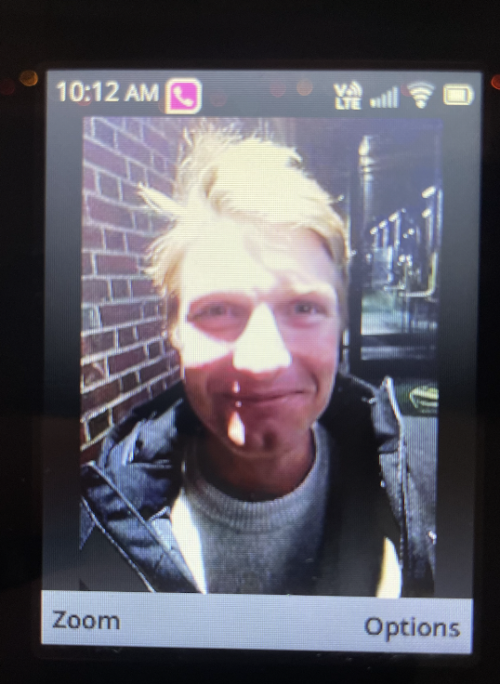I’m not Catholic. But when a few of my roommates got flip phones for Lent in an attempt to decrease their screen time, another roommate and I joined them in a secular attempt to do the same. We couldn’t wait, so we started way before Lent. We ordered five Nokia flip phones, each bought a $10 per month unlimited plan from tracphone.com, and began the experiment.
We would often leave our iPhones in the room, sometimes just keep them in our backpack, and occasionally relapse to full iPhones on the more complicated PSET/paper days. If we went out, we would only bring flip phones, which made coordinating plans chaotic but saved us from having to call many Ubers home.
The original goal was to decrease iPhone screen time, which it did by about 90 minutes per day, but I soon realized there were more rewards for using this flip phone than just increased productivity. These rewards were not obvious in the several hours it took to set it up and get the new number, and copying over my contacts with a keypad seemed a daunting task.
But this inconvenience surprisingly became a pleasure. People loved clumsily typing their number into the flip phone – many using a keypad for the first time. They seemed to enjoy putting their contact in a place as physical as digital can be. That number was in for good, clicked out on heavy keys, and needing many, many more of such clicks to delete; we both clearly really wanted that number in this phone. This telecommunication-ally intimate process made the flip phone feel personal, even local.
This personal touch was enhanced with each contact’s absurdly distorted selfie, taken by the low-quality camera, a pleasant surprise in a $25 flip phone. Everything is funnier in 480p. Taking pictures felt like the digital equivalent of painstakingly loading, aiming, and firing a revolutionary war musket, complete with the crack and flash.
Modern iPhones take pictures sneakily, seamlessly, and people often either don’t notice or don’t appreciate the creation of the permanent digital image. But the flip-phone-camera-musket makes everyone pause for several uncomfortable seconds, as if they were posed in a civil war era photography studio, while they wait to be flashbanged for that low resolution picture. Nobody seemed to mind; they enjoyed being truly photographed, even in lower quality.
The camera was one of the many clumsy and conspicuous, yet entertaining, features of the flip phone. Personal ringtones, and calling in general, are too rare with iPhones today. “Teach Me How to Dougie” blasting through your pocket, ending all nearby conversation as it proclaims a call from “MOM,” is a much better way to take a call.
But to reach such advanced technology on a standard flip phone takes lots of work. Getting a phone with a 3 sq-inch screen and a keypad on Harvard Secure wifi, to Google, to YouTube, to finding Cali Swag District’s aforementioned smash hit, to an MP3 converter, to an MP3 cutter, and finally to my ringtone took several hours. I’d do it again.
That “ordeal” was a powerful reminder of how cushy the modern user experience has become; I get frustrated when the paranoid HarvardKey sign-in takes more than thirty seconds. With the instant gratification of a seamless iPhone, your mind races for infinite stimulation. With such activity right there in your pocket, who wouldn’t spend hours engaging with their iPhone every day?
But the flip phone lacked that ability, slowing everything down in a debilitating yet relaxing way. It practiced patience. You can’t do much, so you only do what you need to do—including downloading ringtones. You stop wasting time on it when you study. You stop pointlessly checking it at parties. When you do finally decide to flip it open, you appreciate it much more than your iPhone. I especially enjoyed hanging up by slamming it shut, unironically using severe text shorthand, playing analog Tetris, and downloading an entire app just for more wallpaper.
This was never the most serious experiment. It may have started as part of the Catholic tradition of Lent, but it was never religiously followed. Yet the flip phone trial still dramatically improved my habits with my iPhone. Additionally, as members of the last generation that didn’t have iPhones before we were teenagers, my roommates and I appreciated the nostalgia. That’s an important generational difference—while we might still use the thumb-and-pinky-next-to-the-ear to mime a phone call, younger kids today pretend to clutch an iPhone.
Such differences in technology have a deep impact on even the smallest social interactions. When the lack of a keypad can tangibly alter our relationships, we should be deliberate in choosing what technology we use. Obviously iPhones are here to stay, and I’ll still use mine, because the flip phone is objectively an inferior product. But try it sometime—you may enjoy a worse phone.
McGavock Cooper ‘24 (mcgavockcooper@college.harvard.edu) had a very dry iPhone already.

